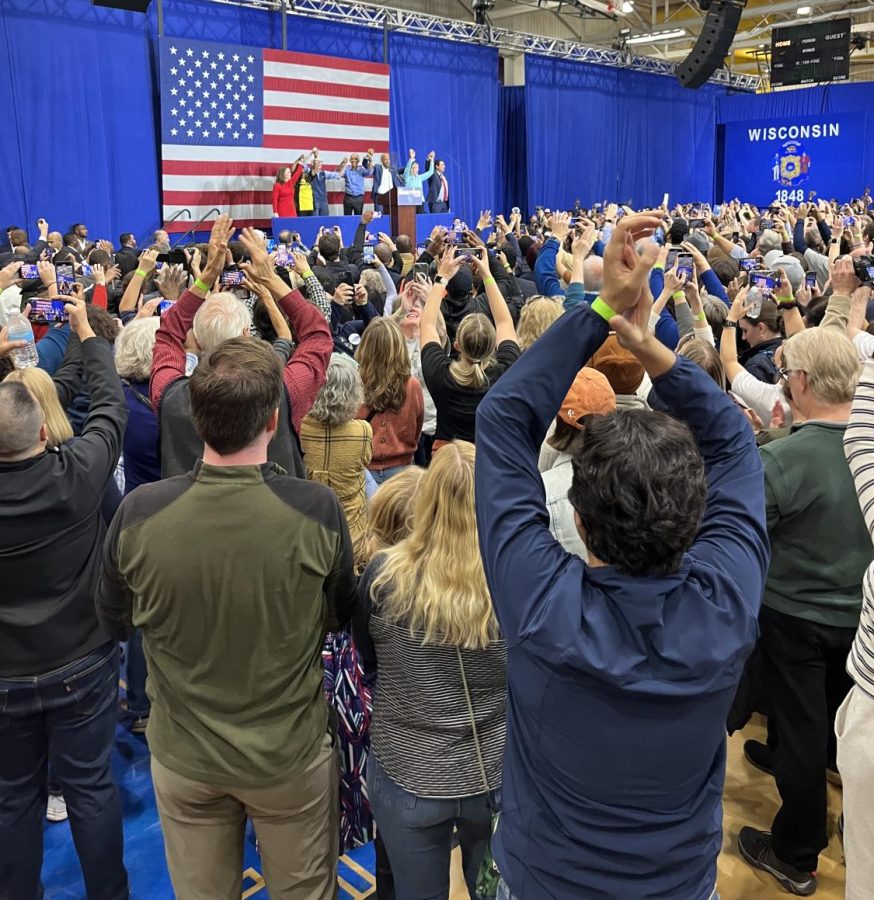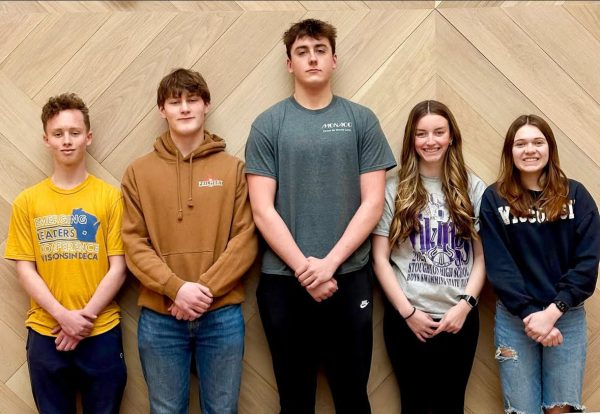Election Results
Democrats campaign alongside former President at a Milwaukee rally.
Voters across Wisconsin cast their ballots for dozens of candidates running for local, state, and national office on Nov. 8, 2022. Voters were also asked to weigh in on school district, city and county referendums across the state. Wisconsin elected a governor, US senator, and many other candidates.
The race for Wisconsin’s US Senate seat was hotly contested. After the Aug. 9 primary election, the two major candidates were incumbent two term Republican US Senator Ron Johnson and Democratic Lieutenant Governor Mandela Barnes, who was elected to the post four years earlier in the 2018 midterms. Many pollsters favored Johnson to be re-elected, but it remained one of the most competitive races until election day. One Marquette Law School poll released on Nov. 2 showed Johnson leading Barnes by two percentage points.
Less than 24 hours after polls had closed, incumbent Senator Johnson claimed victory, his team released the following message Wednesday morning.
“The corporate media is refusing to call a race that is over […] Truth has prevailed over lies and the politics of personal destruction. I want to thank my family and everyone who supported me and worked so hard to save this U.S. Senate seat. I will do everything I can to help make things better for Wisconsinites and heal and unify our country,” Johnson says through a press release.
The Associated Press and other major news organizations called the race for Republican Senator Johnson soon after. Johnson was seen as the number one most vulnerable incumbent Republican senator in the 2022 election cycle.
Lt. Gov Barnes spoke to supporters in Milwaukee later that day, conceding the race to Senator Johnson.
“I got in this race because I believe in the Wisconsin promise of a fair shot at succes. I believe in that promise more today than I ever have […] this is not the time for us to tune out; it’s the time for us to turn up,” Barnes says, in a recording
Johnson defeated Bar- nes by less than 30,000 votes, or 1%. The closest margin in Johnson’s career.
Wisconsin wasn’t home to just one hotly contested statewide race. Wisconsin voters also re-elected incumbent Democratic Governor Evers to a second term. During the Aug. 9 primary election for governor, Republicans chose Tim Michels, a businessman and co-owner of Michels Corporation, a family-owned and operated construction company, to face off against Evers.
The same Marquette Law school poll on Nov. 2, had Evers and Michels in a statistical tie of 48%-48%. Wisconsin first elected Evers in the 2018 Midterms, which many characterized as a “Blue Wave” year, meaning an election where Democrats make major political gains. Evers was running alongside Lt. Gov nominee Sara Rodriguez after incumbent Lt. Gov. Barnes decided to run for US Senate.
The governor’s race was called early Wednesday morning around 1 a.m. Shortly before the race was called, Michels conceded.
“Unfortunately, the math doesn’t add up […] I don’t know what we would’ve done differently. It was a very spirited effort. I love going everywhere from Superior to Kenosha, Sheboygan to La Crosse. […] but it wasn’t our night tonight. And I thank everybody for all of your support. God bless. Thank you,“ Michels said to a group of supporters late on election night, according to a press release.
Evers addressed a crowd of supporters at the Orpheum Theater in downtown Madison shortly after Michels conceded.
“I’m jazzed as hell to tell you that on Jan. 3, 2023, I will still be the 46th governor of the great state of Wisconsin. Holy mackerel, folks, how about that?” Evers said during his acceptance speech follow-
ing his victory, according to an event transcript.
Lt. Governor nominee Rodriguez and incumbent Attorney General Josh Kaul and Secretary of state Doug La Follette were also elected Tuesday. However, Repub-
lican nominee John Leiber defeated Democrat Aaron Richardson. Leiber will be the only Republican state- wide elected official in a state constitutional office come January 2023.
Voters in the Stoughton Area School District app- roved two referendums Tuesday night, totaling $48 million.
According to the SASD website, “Question 1 includes a district-wide investment in near-term capital maintenance and a significant investment in building maintenance, safety, and security.”
SASD Superintendent Dr. Dan Keyser has been learning about the referendums and their needs since he took over the office in June 2022. He has been working with other district administrators to inform voters about what exactly the referendum is and its importance.
“Through talking to people when I first came here-both board members and building and district administrators I learned a lot about the referendums, and what’s been going on,” Keyser says.
The referendums approve funds for many facility projects that Keyser explained just wouldn’t be possible under a normal budget and that these referendums will make the projects in the most critical need possible.
“There are some projects that just fall outside of our budget,“ Keyser says.
The district will start a six to twelve month planning period to draft plans going forward.
“We will be kicking off the process this afternoon, meeting with our architects […] to start to lay out that timeline […] now we go into a design phase,“ Keyser says on Nov.14.
Keyser explained that the approval of the two referendums will allow SASD to address the most pressing long term issues the district is facing. One of the things the referendum approved was the removal of the district’s community gym, and the construction of a replacement gym addition to River Bluff Middle School.
“The gym has outlived its useful life span,” Keyser said.
Voters overwhelmingly approved the first question with 66% of the ballots cast being “Yes” indicating support for the referen- dum. The second question was also approved with 62% of the vote in favor.
That’s a wrap to the 2022 midterm elections. The next election in Wisconsin will be the spring election on April 4. 2023.

Simon is a senior, and this is his third year on staff! He is the publication’s Editor-in-Chief this year! Simon joined the Norse Star his sophomore...







